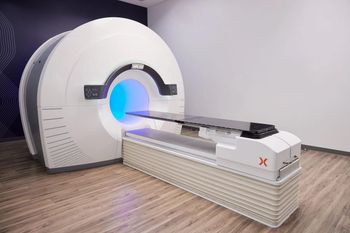
Most Parents Underestimate Potential Risk of CT Scans
Parents may be underestimate the small increased cancer risk associated with their child undergoing a CT scan.
Parents may be underestimating the small increased cancer risk associated with their child undergoing a computed tomography (CT) scan. The results of a study published this month in
“Anecdotally, parents often ask about radiation exposure from plain X-rays, but rarely when a CT is ordered,” Kathy Boutis, MD, of the Hospital for Sick Children in Toronto, told Diagnostic Imaging. “To the investigators, this was a little surprising since CT exposes patients to 60- to 80-fold greater radiation.”
In this study, Boutis and colleagues wanted to explore parents’ knowledge on the topic to offer more reassurance about plain X-rays. In addition, if a knowledge deficit about radiation was found, physicians would likely be more accountable to initiating informed discussions to parents about the risks and benefits of CT imaging, Boutis said.
The researchers surveyed 742 parents whose children presented with a head injury. Of the participants, only 46.8 percent had knowledge of the fact that radiation exposure during a CT increased the lifetime risk from malignancy.
In addition, the surveyed parents tended to underestimate the radiation dose and risk associated with a CT, and overestimated the exposure dose during X-rays. More than half of the parents underestimated radiation exposure from a head CT compared with background radiation exposure. In contrast, 44.8 percent of surveyed parents overestimated the potential risk for malignancy associated with a skull radiograph.
Before parents were informed about the risk estimation from CT, 90.4 percent were very willing or willing to proceed with a head CT. However, after the information was disclosed, 69.6 percent were very willing or willing, and 5.6 percent would have refused CT.
“About 90 percent of parents would like more information about radiation exposure from diagnostic tests like CT scans,” Boutis said, adding that this is something that the medical community as a whole should be aware of and move to address.
Physicians should be aware that parents are increasingly concerned and aware of the potential risks associated with tests such as CT.
“We as physicians need to be willing and, indeed, initiate discussions about this, and carefully balance the benefit expected from a scan against the potential small risk,” Boutis said. “It will likely always be difficult to define exactly what the risk is associated with CT, but we should take a best practice approach and consider that there may be a small future risk.”
Boutis recommended that physicians perform a risk/benefit analysis to ensure that CT is only used when it is most beneficial to patients. In addition, she said that it is important for physicians to be able to discuss the relative doses of different imaging tests.
Newsletter
Stay at the forefront of radiology with the Diagnostic Imaging newsletter, delivering the latest news, clinical insights, and imaging advancements for today’s radiologists.




























